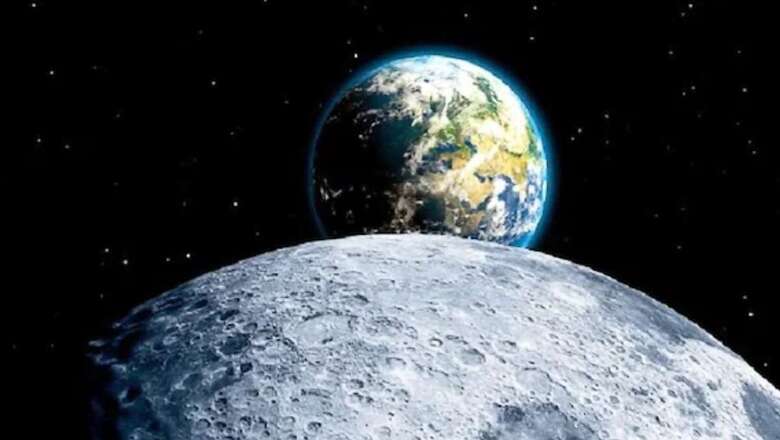
views
Recent studies have contributed greatly to the discovery of water on the Moon which appears to be more than what was initially assumed. It has far-reaching ramifications for the future of manned lunar exploration and even lunar colonisation. The latest study made use of data from the Moon Mineralogy Mapper (M3), an imaging spectrometer onboard the Indian space probe Chandrayaan-1, which orbited the Moon from 2008 to 2009. The Planetary Science Journal has published the research, reported MoneyControl.
An Overview of Research
In the past, the Moon used to be categorised as a dry celestial body. First assessments in the early 1970s using lunar samples gathered during the Apollo missions concluded that if water was present, it would only freeze and decompose under the effects of solar radiation and that hydrogen and oxygen can easily escape the gravity of the moon. Nonetheless, the subsequent explorations and technological improvements aiming at more detailed analysis have revealed the presence of water in different forms on lunar terrain.
Key Findings
In a recent study by scientists from the Planetary Science Institute, they discovered traces of water molecules at almost all the latitudes on the Moon. This ranges from areas that are expected to be dry all through, to those that are exposed to direct sunlight. The study used mineralogy maps acquired from the Chandrayaan-1 mission which pointed to the existence of water in different areas on the surface of the Moon.
The work levels the distinction between molecular water (H2O) and hydroxyl (OH). Nevertheless, it found that hydroxyl is relatively more abundant at some specific sites, especially in the craters created by meteoroids. This implies that any underground water may evaporate from lunar rocks when they are exposed to the surface, leaving behind hydroxyl molecules.
On the surface of the moon, the water-bearing materials that are found are a result of geological activity like cratering and volcanic activity. Such processes have delivered materials containing water at the surface and suggest an active geological past with substantial episodes of hydration.
The outcome of the research shows that future astronauts do not have to depend solely on polar areas for water provision. However, they could potentially find tractable water even if they were near the equator, according to the research. This accessibility could significantly ease long-term manned presence on the Moon and exploration of Mars as water would be available on the site for consumption and creation of fuel.
Methods of Detection
Lunar water detection requires high-resolution spectroscopy tools that use light bouncing off the lunar surface. Unlike standard cameras which record only three colour bands (red, green, blue) the spectrometers can record a wider range of colours including the heat or infrared range. This capability enables scientists to determine specific colour ranges characteristic of water and hydroxyl compounds.
The main researcher in this study was Roger Clark of the Planetary Science Institute. He stressed that knowledge of where water is situated is not only useful to reconstruct the geological history of the Moon but also to future manned flights. Clark stated: “Future astronauts may be able to find water even near the equator by exploiting these water-rich areas. Previously, it was thought that only the polar region, and in particular, the deeply shadowed craters at the poles were where water could be found in abundance”
These outcomes seem to support the need to have more lunar exploration, especially with future missions like NASA’s Artemis programme intended to send humans to the moon and build sustainable lunar missions. Knowledge about the availability and distribution of water will be necessary to assess the long-term exploration and colonization of our natural satellite.



















Comments
0 comment